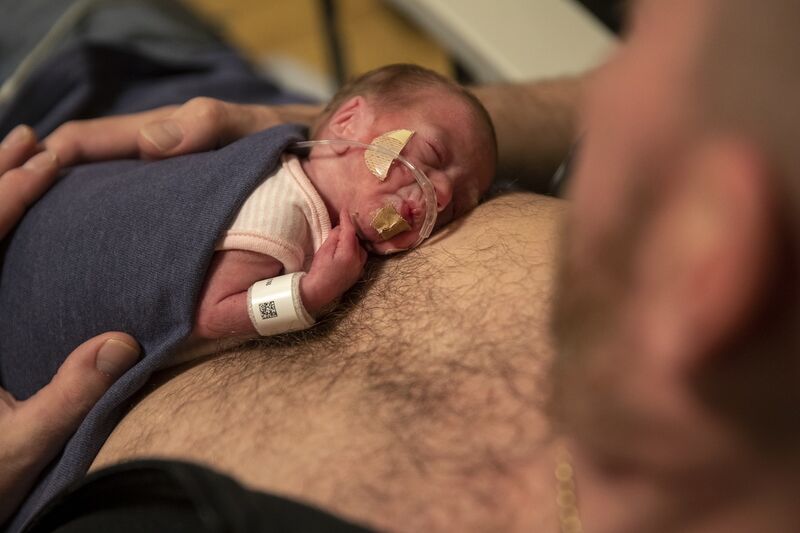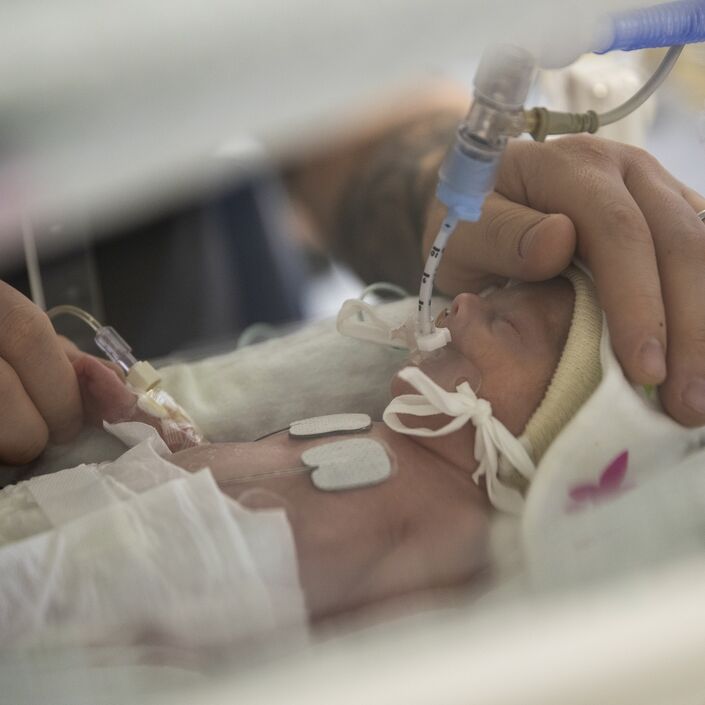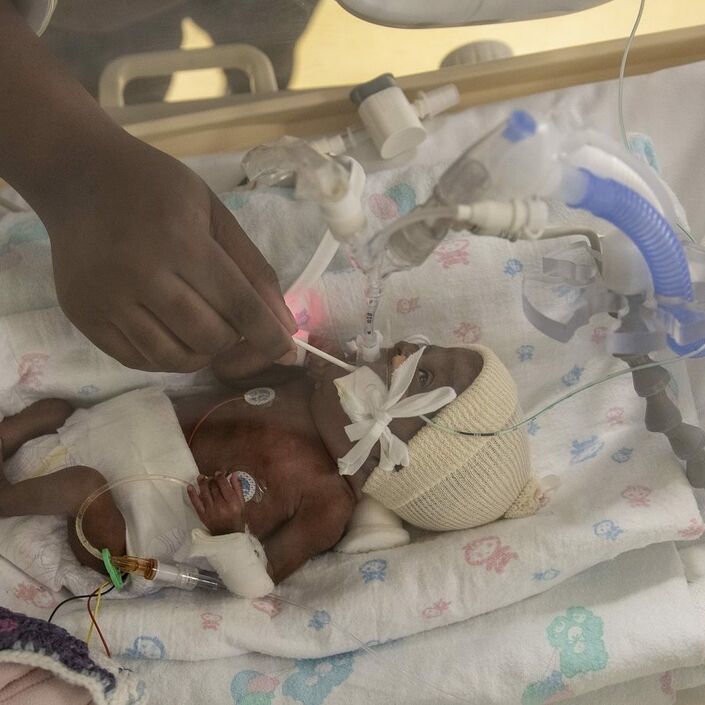Be careful to:
- Remove watches and jewellery, pull your sleeves up to the elbows, and wash your hands and lower arms. This reduces the risk of infection inside the incubator.
- Always make sure that your hands are warm before touching your baby.
- If your baby has difficulty keeping warm, make sure there is a layer of fabric (a hat, vest or blanket) between you.
- Speak to your baby before touching, so that they are aware of your presence before you start.
- Cradle one or both hands around your baby’s feet, head or body, and keep them still. Your baby may also like to grasp one of your fingers.
- Wait and watch for signs that tell you that your baby is relaxed.
You can continue for as long as you are both comfortable. When you finish comfort holding, move your hands away from your baby very slowly.
Kangaroo Care
Kangaroo Care is skin-to-skin contact when a baby is placed against the parent’s chest. Benefits include improvements with lactation and with establishing breastfeeding, and better weight gain for the baby. In the longer term, it helps parents to feel closer to their babies and more confident in caring for them.
Kangaroo Care can be used with babies with high medical needs, but this will require careful planning and collaboration with the neonatal staff.
Talk to staff and plan a good time and comfortable place for you to try Kangaroo Care.
While Kangaroo Care is based on direct skin-to-skin contact, removing your baby’s clothes is not vital if this is upsetting for him or her. A hat and a blanket for extra warmth might be necessary for very small babies.
Hold your baby chest-to-chest tucked inside your clothes, enclosing him/her to keep his/her temperature stable. Check that the head is well supported and if you can’t see your baby easily, try using a hand mirror.
Explore what you both like to enjoy together. Some babies like to have their eyes shielded, others like to be sung to softly or while having a tube feed. Allow time for your baby to settle and get the full benefit.
If you baby is happy, you can cuddle for as long as you are both comfortable. Lie back, relax and enjoy.



